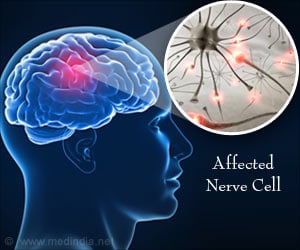Brain diseases like Amyotrophic Lateral Sclerosis or ALS may have found a cure with a particular class of cancer drugs called PARP inhibitors, says a new study.
Highlights:
- A class of drugs that treats other cancers found beneficial for the treatment of Amyotrophic Lateral Sclerosis (ALS) and Frontotemporal degeneration (FTD)
- These cancer drugs inhibit poly (ADP-ribose) polymerase and prevent toxic accumulations of proteins in the cytoplasm of the neurons
The study is published in the journal, Molecular Cell.
Background on the connection between TDP-43, stress granules, ALS and FTD
- TDP-43 proteins are DNA-binding proteins that usually reside in the nucleus of the cell. It is the primary pathological protein in both ALS and FTD.
- There is evidence that ALS and FTD are closely related conditions with overlapping clinical, genetic and neuropathological features. ALS involves degeneration of motor neurons, and FTD involves degeneration of cortical neurons.
- When TDP-43 mistakenly goes outside the nucleus into the cytoplasm, it forms clumps in the brain cells or cytoplasmic aggregates, in the regions of the central nervous system that are affected in ALS and FTD.
- When TDP-43 binds to another molecule, poly (ADP-ribose) or PAR, it accumulates inside several cellular structures called stress granules (SGs). SGs are cytoplasmic RNA granules that are formed in response to various external stimuli and are essential to cell survival following stress. SGs have been studied in ALS and FTD.
- The initial accumulation does not cause imminent harm to a cell, but after a prolonged period, TDP-43 changes into structures that are observed in brain diseases.
Study – To understand the effect of PARP inhibitors on TDP-43 proteins
- The team found that TDP-43 can change from a soluble form to a concentrated liquid form by interacting with other TDP-43 molecules and binding non-covalently with macromolecules like PAR.
- Binding of TDP-43 with PAR promotes liquid-liquid phase separation of TDP-43 which is required for its accumulation inside stress granules present in mammalian cells and neurons.
- Initially, being inside the stress granules protects TDP-43 from disease-associated phosphorylation.
- However, when there is long-term stress, the stress granules resolve and leave behind the aggregates of phosphorylated TDP-43.
- The soluble or the liquid form of TDP-43 is characteristic of a stress granule and hence likely beneficial. However, when the TDP-43 molecules become solidified with time, they can be difficult to remove.
The small inhibitor molecules inhibit the formation of cytoplasmic TDP-43 aggregates without affecting stress granule assembly. In this process, they stop TDP-43-associated pathology and neurodegeneration and could have therapeutic utility for ALS and FTD.
ALS and FTD-TDP-43 can be devastating for the patient and family, and there are limited treatment options. "What excited me about pursuing this pathway was the promise of small molecules that attack the disease process of TDP-43," said lead author Leeanne McGurk, PhD, a research associate in Bonini's lab. "When I tested them on cultured cells, I found they could alleviate the build-up of TDP-43 that mirrors the abnormal protein clumps we see in disease."
The team’s findings could provide the next step for neurologists to look for new ways to fight neurodegenerative disorders like ALS.
- Leeanne McGurk, Edward Gomes, Lin Guo, Jelena Mojsilovic-Petrovic, Van Tran, Robert G. Kalb, James Shorter, Nancy M. Bonini. “Poly (ADP-Ribose) Prevents Pathological Phase Separation of TDP-43 by Promoting Liquid Demixing and Stress Granule Localization”. Molecular Cell, (2018); DOI: 10.1016/j.molcel.2018.07.002
Source-Medindia















